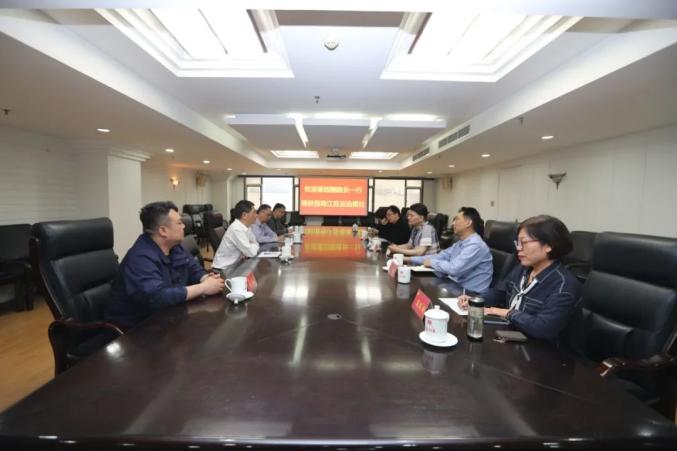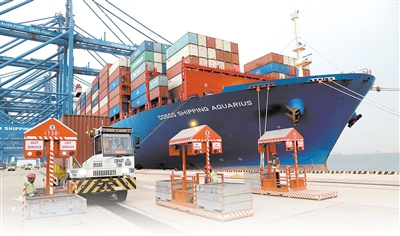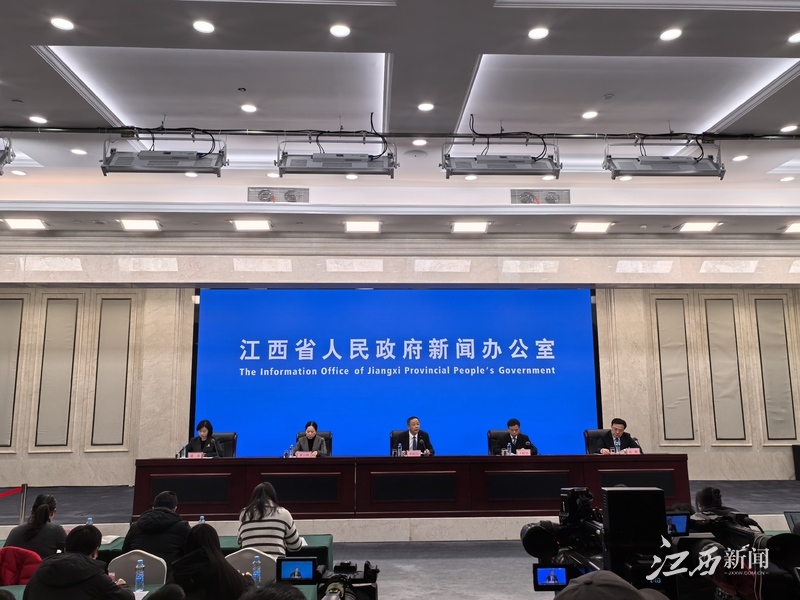Dialogue | From The "Belt And Road" To The Satellite Going Out To Sea To Decode The Strategic Layout Of China Telecom Satellite Company's "Integration Of Heaven And Earth"
Dialogue | From The "Belt And Road" To The Satellite Going Out To Sea To Decode The Strategic Layout Of China Telecom Satellite Company's "Integration Of Heaven And Earth"
With the continuous evolution of communication technology, satellite communication has gradually become an important part of the global communication network. Compared with traditional communication methods, satellite communication has a large range and a long distance, and has unique advantages in supporting scientific research, rescue, and ocean-going fields.
With the continuous evolution of communication technology, satellite communication has gradually become an important part of the global communication network. Compared with traditional communication methods, satellite communication has a large range and a long distance, and has unique advantages in supporting scientific research, rescue, and ocean-going fields. Since China Telecom Satellite Company launched its direct mobile phone satellite service, its application scenarios have become increasingly rich.
At the hardware level, China Telecom has joined hands with mainstream brands such as Huawei, Honor, Xiaomi, OPPO, vivo, ZTE, and Samsung to launch 31 terminals that support direct connection to satellite functions for mobile phones. In the field of practical application, satellite services are even promoted overseas. Not long ago, China Telecom and Laos Communications Co., Ltd. ETL jointly held a launch conference on Tiantong-Mobile Direct Connect satellite in Laos, officially announcing that Tiantong Satellite will go abroad. What is the significance of Tiantong satellite going to sea? What profound impact has this business brought to Laos? What is China Telecom Satellite Company’s layout in the field of satellite communications? With these questions in mind, we communicated with relevant persons in charge of China Telecom Satellite Company and unearthed a new strategic annotation on "Integration of Heaven and Earth".
From the Belt and Road Initiative to the Digital Silk Road: the "Chinese Solution" for Communication Services
The outbound travel of Tiantong satellite is not only a technological advancement, but also a demonstration of the strength of the national communications industry. It has been more than ten years since the Belt and Road Initiative was proposed, and the concept of the Digital Silk Road has also been blowing with the east wind of the times and actively transforming results. From the perspective of global and regional development strategies, the construction of the "Digital Silk Road" is conducive to narrowing the digital divide, better meeting the needs of co-construction countries in developing cooperation, and effectively filling the urgent need for co-construction countries to accelerate the development of productivity, increase employment and promote growth. With the advent of the digital age, the "Digital Silk Road" will also drive more countries to integrate into the global supply chain and achieve mutual benefit and win-win results. And above this road, satellite communications are the brightest "pearl".
As a "national team" in the field of technology-based enterprises and information communications, China Telecom has always been the main force in the construction of the Digital Silk Road. As my country gradually deepens its construction of this digital path, the importance of satellite network capabilities has become increasingly prominent. It can greatly promote cross-border information interaction capabilities, help "Chinese brands" shape their own influence at the international level, and make "Chinese solutions" the main theme of the world's communications industry. Therefore, the Tiantong satellite's overseas trip has more far-reaching strategic value.
"At present, the Tiantong satellite network has covered 17 countries in South Asia and Southeast Asia, and has network capabilities. The development of overseas users can bring certain economic benefits. Tiantong satellite is a satellite mobile communication system independently built by China. Its "going out" also marks that China's technological breakthroughs in the field of high-end satellite communications have been recognized at the international level and have valuable value in promoting the continuous innovation of China's satellite technology, terminal equipment and services." When talking about the role of China Telecom satellite business in moving to the international market, a relevant person in charge of China Telecom Satellite Company said this.
Mobile phone direct connection to satellite business goes overseas: a "digital bridge" built in the air
Before the beginning of this "trip" to Laos, the first thing to be affected is the need to deeply analyze the specific local pain points and needs in order to enable Tiantong Satellite to better serve it. As an important node in the "Belt and Road" economic corridor, Laos is in a critical stage of development, but it has long faced the problem of weak communication infrastructure.
First of all, at the industrial structure level, Laos' economy is mainly mining and agriculture. Many enterprises lack reliable ground network coverage in their operating areas and urgently need reliable communication systems to support it. Secondly, at the level of communication facilities, all trunk optical cables in Laos are laid overhead. Due to frequent floods and geological disasters, they often face optical cable interruptions, which cannot meet the communication needs of emergency rescue and disaster relief. Finally, from the perspective of urban and rural population layout, Laos's communication network foundation is relatively backward, with village coverage of about 95% and population coverage rate of about 70%. Therefore, the construction of ground networks also faces the challenges of high costs and long cycles. These practical pain points have also made the landing of Tiantong satellite a natural result.
Based on local actual needs, China Telecom Satellite Company has made in-depth arrangements to promote the successful implementation of Tiantong's direct mobile phone satellite business in Laos, and has set up an important milestone on Tiantong's satellite communication technology's path to global inclusive services. The core value of this service lies in the convenience of communication that mobile terminals can directly connect to satellites. China Telecom and Huawei and other upstream and downstream companies in the industrial chain have been working together for more than two years to develop intelligence and jointly form a R&D team to solve problems such as built-in satellite antennas, stable connections of weak signals, and communication protocol fusion. It is the first smartphone direct-connected satellite call technology worldwide.
"With the help of Tiantong's direct connection satellite business, Laos' local mining, planting, transportation and logistics industries can effectively solve basic communication needs, improve operating efficiency, and promote economic development. When natural disasters and other situations occur, the ground network is facing paralysis, and Tiantong's satellite network and platform can be used for emergency communications at the disaster relief site to seize the opportunity for rescue." When talking about the changes brought to Laos by the direct connection satellite business of mobile phones, a relevant person in charge of China Telecom Satellite Company said. Of course, it also has a significant positive effect in the basic communication capability coverage level. "With the blinding capability of satellite networks, local Laos operators can quickly achieve the goal of telephone and village access and achieve universal coverage."
The comprehensive upgrade of communications is an important support for the country's economic and social development. The landing of Tiantong satellite has actually greatly promoted the completion of Laos' communication system and has far-reaching value. "This cooperation will provide convenient communication services to people in remote areas without ground-free network signals, and promote the development of the national communication system to a stronger level and a wider dimension. This service will become a key tool to support the country's social and economic construction, national defense and security, social stability and emergency disaster relief." At the business press conference, Vatana, deputy general manager of Laos Communications Co., Ltd., explained the broad and diverse possibilities brought by Tiantong Satellite in this way.
China Telecom Satellite Company’s strategic layout: from landing to ecology
In fact, the successful overseas expansion of the mobile phone direct-connected satellite business is just the tip of the iceberg of China Telecom Satellite Company in international communications business. From direct connection between mobile phones to direct connection between cars, from Huawei Pro to BYD looking up to U8... Driven by the "hard power" of technology, many devices have been connected with Tiantong satellite, confirming the firm pace of the "integration of heaven and earth" strategy. In today's highly globalized industry, the strong leadership ability of the multinational communications industry is precisely the embodiment of comprehensive national strength. The successful landing of Tiantong Satellite overseas is also a powerful exploration of China Telecom Satellite Company from providing communication services to building a digital ecosystem.
From the perspective of satellite business development, Tiantong’s satellite business has been put into operation in overseas countries for the first time, which is not only a milestone in the interconnection of China-Laos digital infrastructure, but also will inject new impetus into the prosperity of digital ecology in Southeast Asia. It is understood that in the future, China and Laos will continue to rely on direct mobile phone connection satellite business cooperation to jointly empower remote areas to fully bridge the "digital divide" and help social fairness and balanced economic development.
From the perspective of the layout of the Digital Silk Road, the direct connection of mobile phone satellite business going overseas is only the starting point of this "track". In the future, more cross-border businesses will be implemented to digitally empower countries on this "digital Silk Road" from more dimensions. "China Telecom will focus on the key directions of the Belt and Road Initiative such as Southeast Asia and South Asia, focus on key businesses such as direct mobile phone connection and international code numbers, actively work with ecological partners, gather upward and downstream forces of the industrial chain, strengthen communication and cooperation with local regulatory departments and operators, and jointly promote Tiantong satellite business to serve more users around the world." The head of China Telecom Satellite Company said.
It can be seen that from the "Belt and Road" to the Tiantong Satellite going overseas, the practical experience of China Telecom Satellite Company has revealed a profound logic: in the digital age, communication infrastructure has become the core element of national competitiveness. When the Lao people connect with the world through the Tiantong satellite, and when China's technical standards are recognized internationally, what we see is not only a technological success, but also an evolution of development concepts - empowering the global market with technological innovation and bridging the development gap with digital cooperation. Today, standing at the new starting point of this "digital Silk Road", China Telecom Satellite Company is still keeping pace. This universal and mutually beneficial spirit of cooperation may be the most moving footnote of the "Belt and Road" initiative: to allow every land to share the convenience of communication and bathe in the light of technology.





